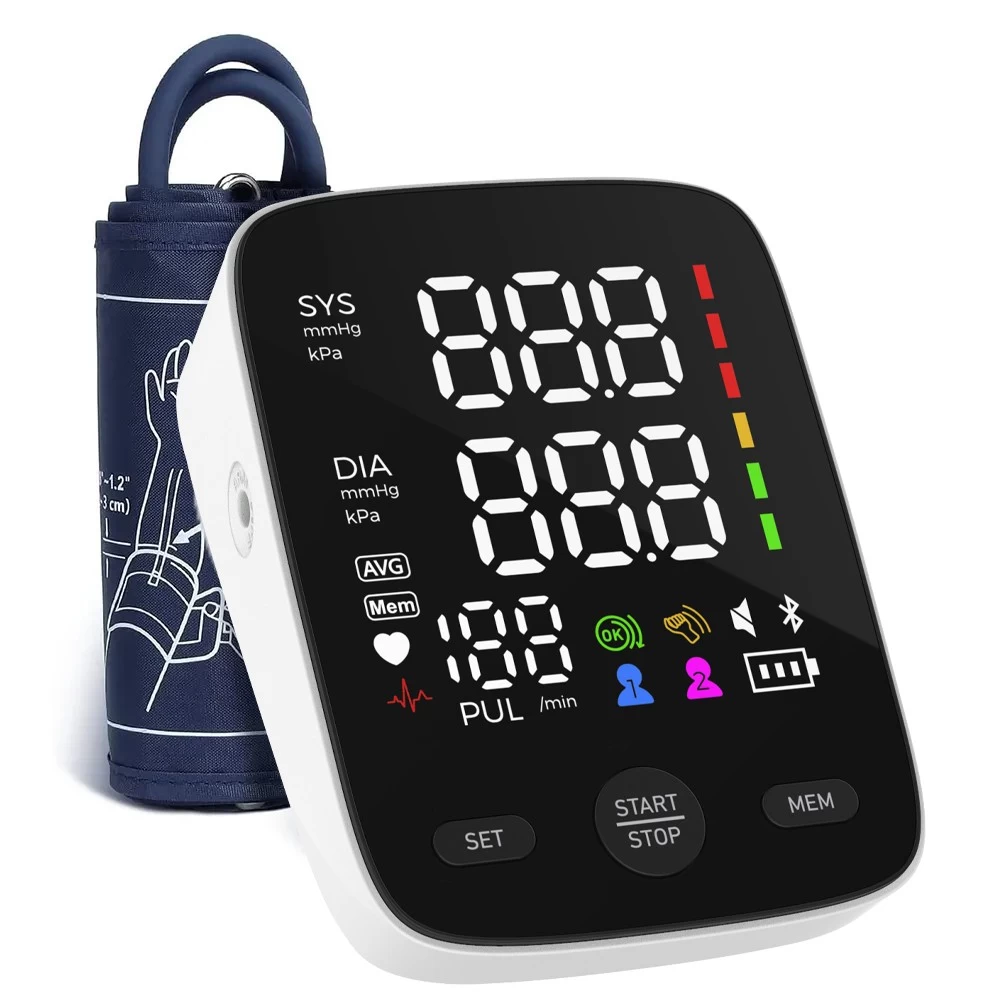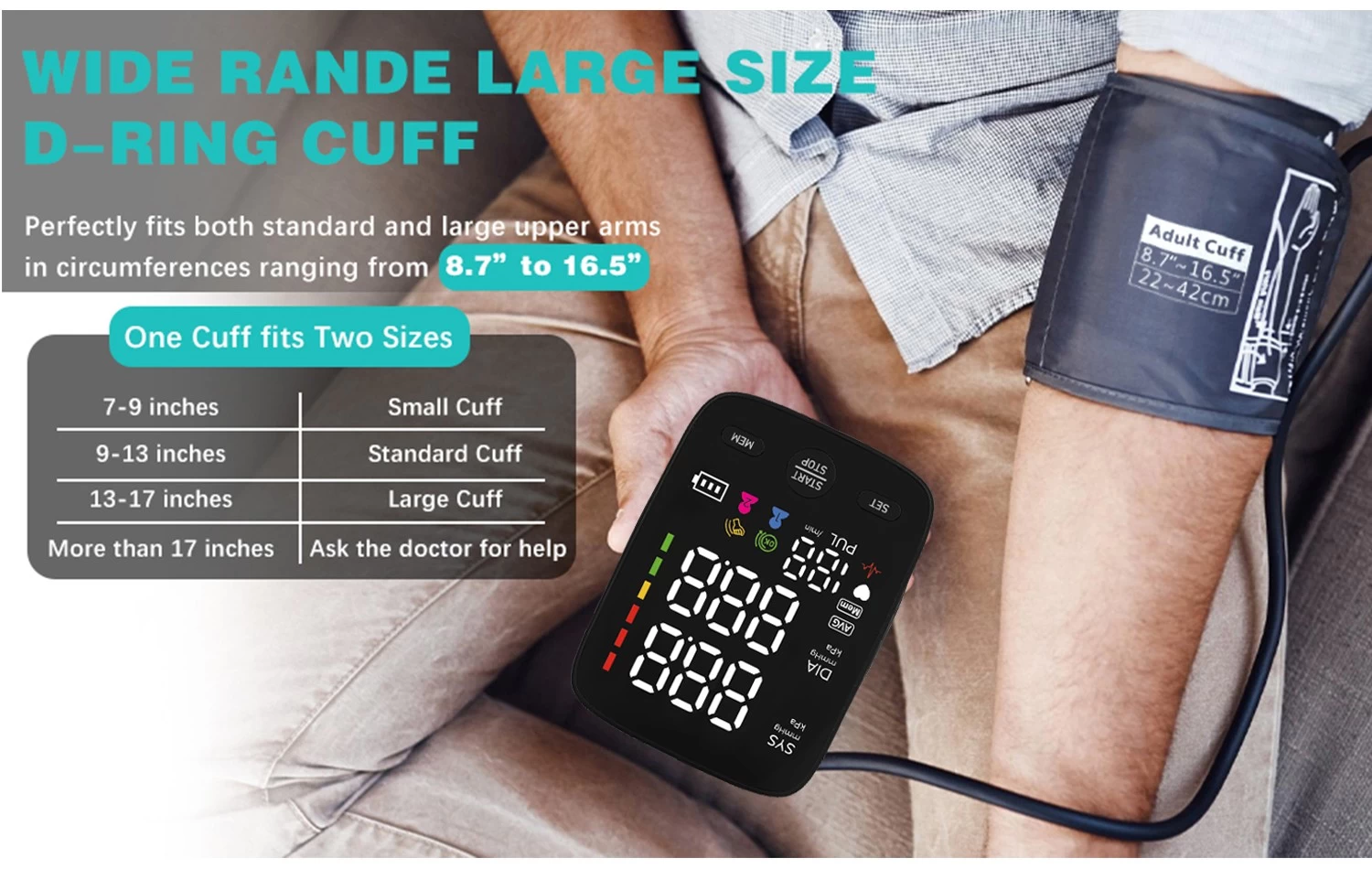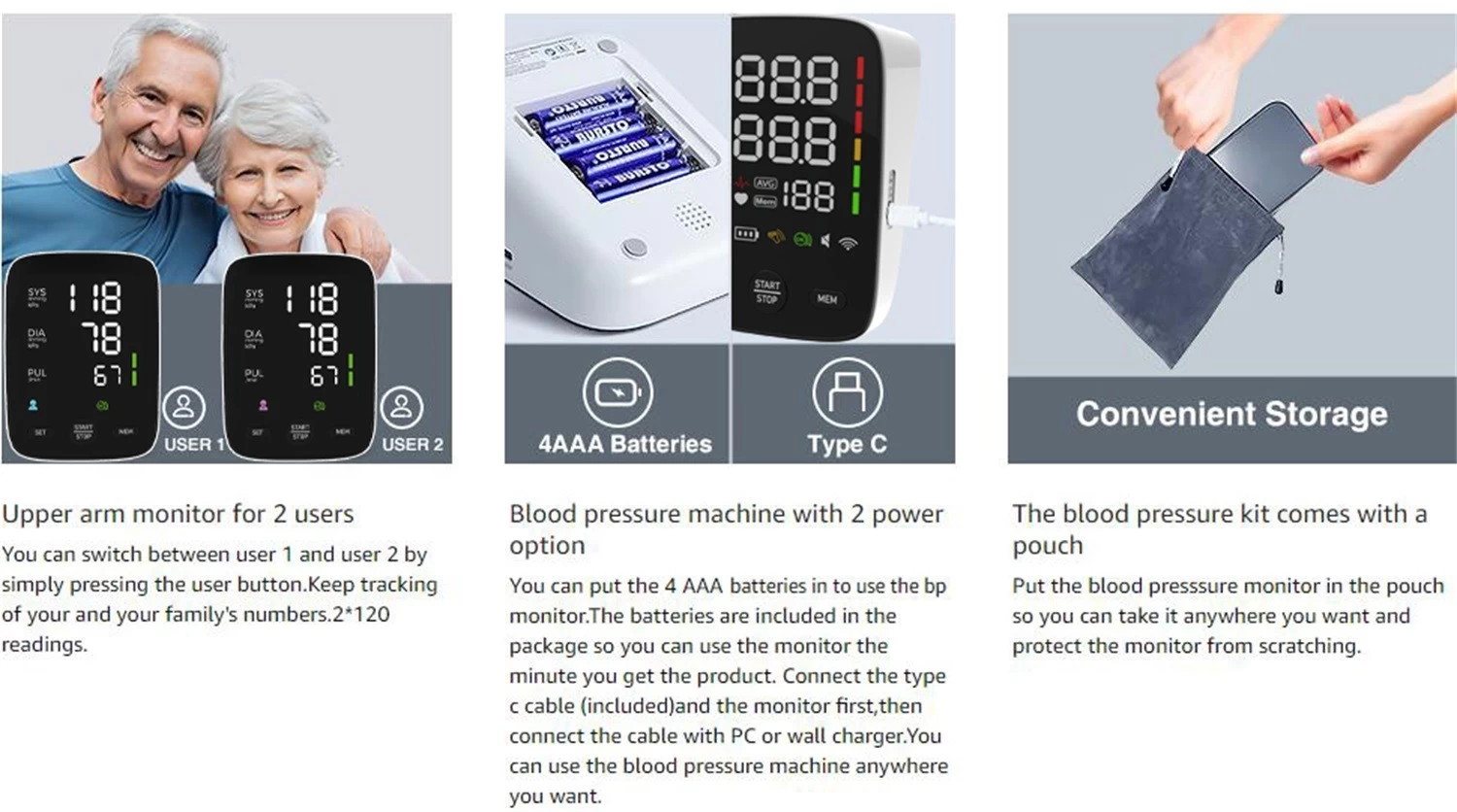What to Look for in a Best Home BP Monitor
Release time:2025-06-30
Table of Contents:
1.What to Look for in a BP Monitor
2.Accuracy
3.Type of BP Monitor
4.Ease of Use
5.Memory Function
6.Additional Features
7.Battery Life and Power Options
8.Price
1.What to Look for in a BP Monitor
In an era where health consciousness is on the rise, monitoring blood pressure has become an essential part of maintaining well - being for many individuals. A blood pressure (BP) monitor is a valuable device that allows people to keep track of their blood pressure levels conveniently at home, enabling early detection of potential health issues and better management of conditions like hypertension. However, with a plethora of BP monitors available in the market, choosing the right one can be a daunting task. This article will guide you through the key factors to consider when looking for a BP monitor, ensuring you make an informed decision that suits your needs.
2.Accuracy
The most critical aspect of any BP monitor is its accuracy. Inaccurate readings can lead to misdiagnosis, inappropriate treatment decisions, and unnecessary worry. When evaluating the accuracy of a BP monitor, look for devices that have been clinically validated. Organizations such as the Association for the Advancement of Medical Instrumentation (AAMI), the British Hypertension Society (BHS), and the European Society of Hypertension (ESH) conduct rigorous testing on BP monitors to assess their accuracy. Monitors that have passed these tests are more likely to provide reliable readings.
It's also important to note that factors like cuff size, measurement technique, and the condition of the monitor itself can affect accuracy. Ensure that the BP monitor comes with the appropriate cuff size for your arm circumference. A cuff that is too small can result in artificially high readings, while a cuff that is too large may give low readings. Additionally, follow the manufacturer's instructions carefully when taking measurements to get the most accurate results.
3.Type of BP Monitor
- Upper Arm Monitors: These are generally considered the most accurate type of home BP monitors. They work by wrapping a cuff around the upper arm, close to the heart, to measure blood pressure. Upper arm monitors are recommended by healthcare professionals for most people, especially those with a history of heart disease, hypertension, or other cardiovascular conditions. They are available in both manual and automatic models. Automatic upper arm monitors are more popular as they are easier to use, automatically inflating and deflating the cuff and displaying the blood pressure readings on a digital screen.
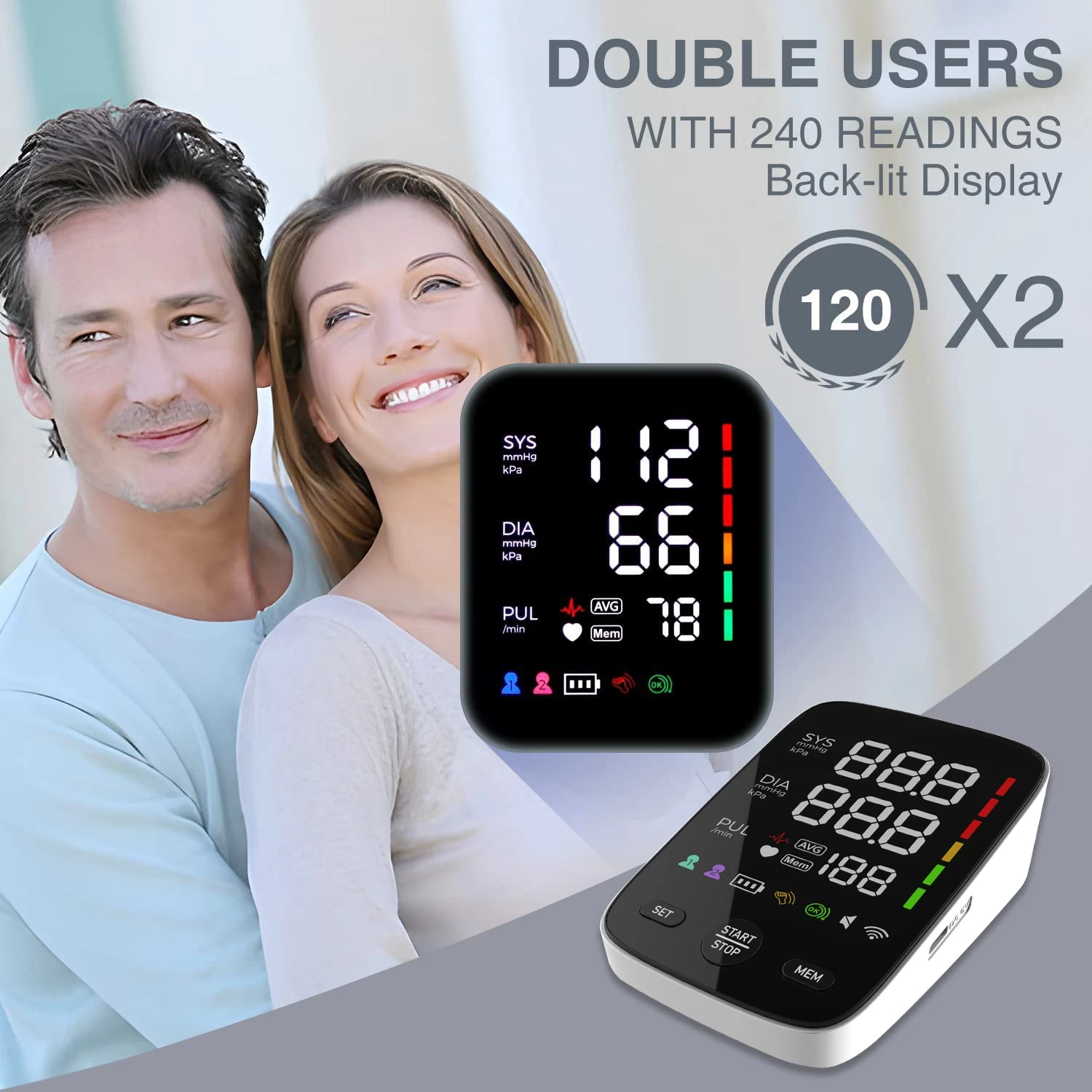
- Wrist Monitors: Wrist monitors are more compact and portable, making them convenient for on - the - go use. However, they tend to be less accurate than upper arm monitors, especially for people with certain medical conditions or those who have difficulty keeping their wrist at heart level during measurement. Wrist monitors are best suited for individuals who are generally healthy, have normal blood pressure, and need a device for quick, occasional checks. It's crucial to keep the wrist at heart level during measurement with a wrist monitor to obtain reliable results.
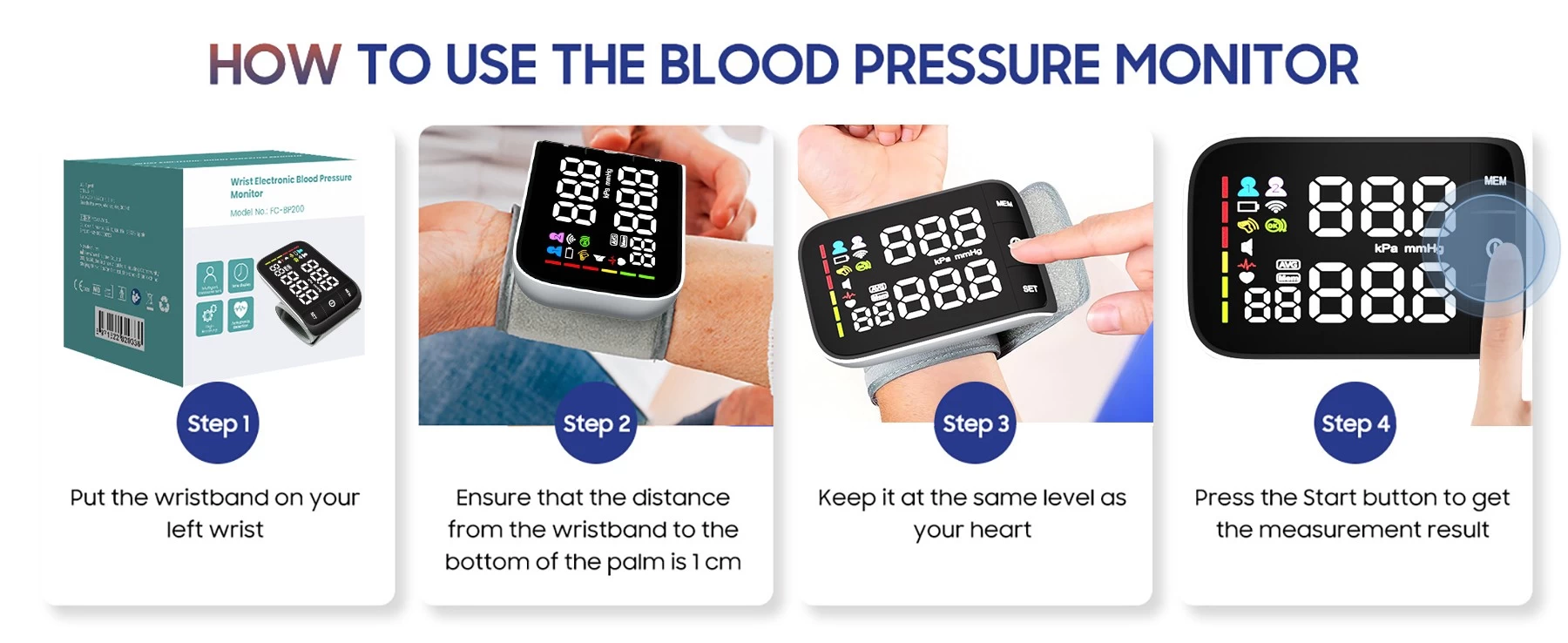
- Finger Monitors: Finger monitors are the most portable but also the least accurate of the three types. They measure blood pressure by placing a sensor on the finger. Due to their small size and the complexity of blood flow in the fingers, finger monitors are often less reliable and are not recommended for regular or critical blood pressure monitoring. They may be suitable for very basic, quick checks in some situations but should not be relied upon for accurate medical assessment.
4.Ease of Use
A BP monitor should be user - friendly, especially if it's intended for home use by individuals of all ages and technical abilities. Look for monitors with large, clear digital displays that show the systolic and diastolic blood pressure readings, as well as the pulse rate. The text on the display should be easy to read, even for those with vision impairments.
The operation of the monitor should be straightforward, with clearly labeled buttons for starting and stopping the measurement, as well as for accessing additional functions. Automatic models that require minimal user input are ideal for those who may find manual operation complicated. Some monitors also come with voice - guided instructions, which can be extremely helpful, especially for the elderly or visually impaired.
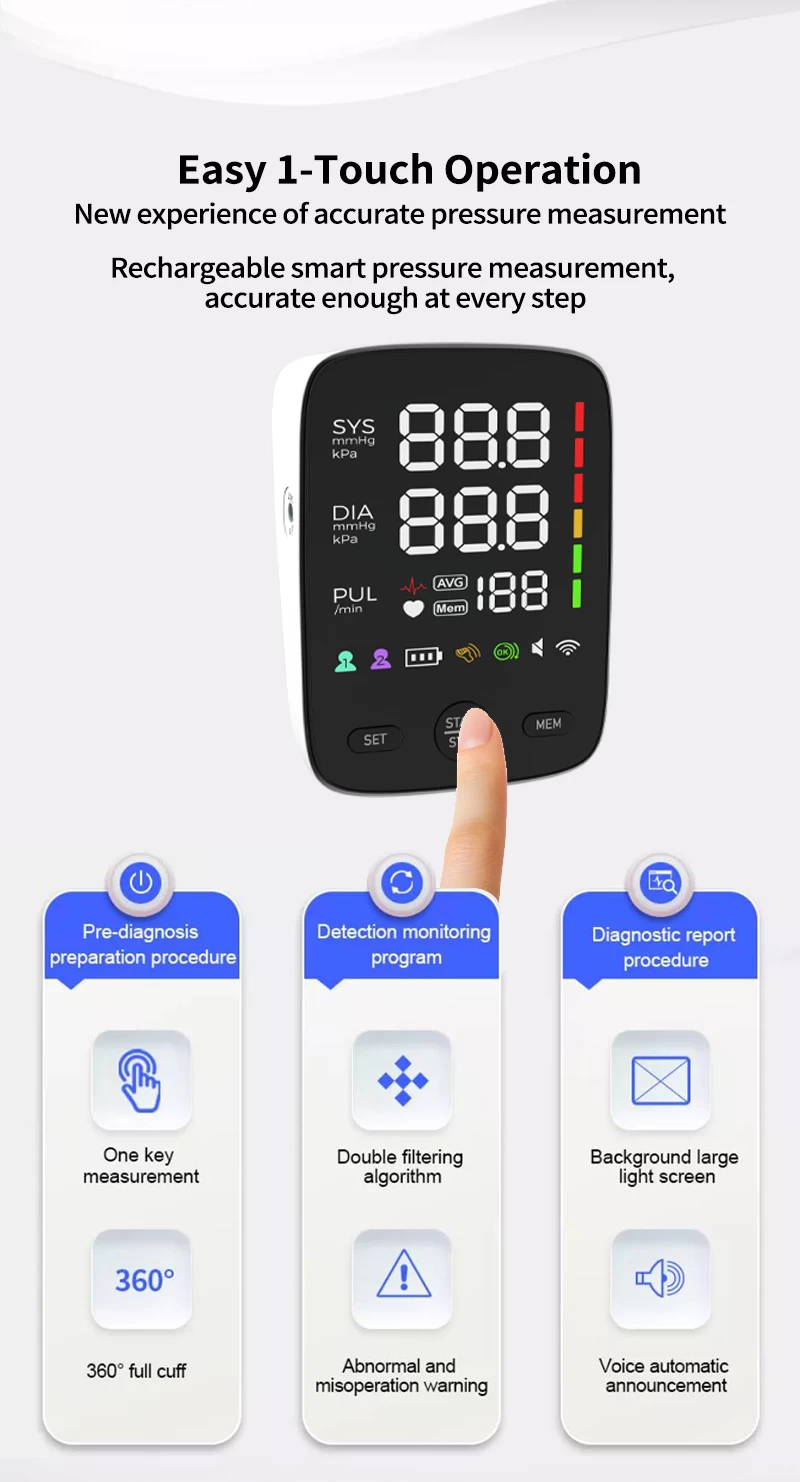
5.Memory Function
A memory function is a valuable feature in a BP monitor as it allows you to store previous blood pressure readings. This is useful for tracking your blood pressure trends over time, which can help both you and your healthcare provider assess the effectiveness of treatment, identify patterns, and make informed decisions about your health. Some monitors can store dozens or even hundreds of readings, and many also have the ability to display the average of a certain number of recent readings.
Advanced monitors may offer additional features such as the ability to categorize readings by time of day or user (in case multiple people are using the same monitor). Some models can even sync with mobile apps or computer software via Bluetooth or USB, enabling you to create detailed graphs and reports for more in - depth analysis.
6.Additional Features
- Fever Alerts: Some BP monitors come with a feature that can detect abnormal heart rates, which may be an indication of a fever or other underlying health issues. This can be a useful added benefit, especially for those who want a more comprehensive health monitoring device.
- Irregular Heartbeat Detection: This feature can identify irregular heart rhythms, such as atrial fibrillation. Early detection of irregular heartbeats is crucial as it can be a sign of serious cardiovascular problems. Monitors with this feature will usually alert the user when an irregular heartbeat is detected, allowing them to seek medical attention promptly.
- Cuff Pressure Indicator: A cuff pressure indicator shows the pressure inside the cuff during measurement. This can help users ensure that the cuff is properly inflated and that the measurement is being taken correctly. It can also be useful for those who are learning how to use a BP monitor or for individuals with specific medical conditions that require careful monitoring of cuff pressure.
7.Battery Life and Power Options
If you opt for a battery - powered BP monitor, consider its battery life. Some monitors can run for months or even years on a set of batteries, while others may require frequent battery changes. Rechargeable models are also available, which can be more cost - effective and environmentally friendly in the long run. Additionally, some monitors offer the option to be powered by an AC adapter, providing a more stable power source when using the monitor at home.

8.Price
BP monitors are available at a wide range of prices, from budget - friendly options to high - end models with advanced features. While it's tempting to go for the cheapest option, keep in mind that accuracy and quality should be your top priorities. You don't necessarily need to break the bank to get a reliable BP monitor, but be wary of extremely low - priced models, as they may not offer the level of accuracy and functionality you need. Look for a monitor that offers a good balance of features, accuracy, and price, and consider it as an investment in your health.
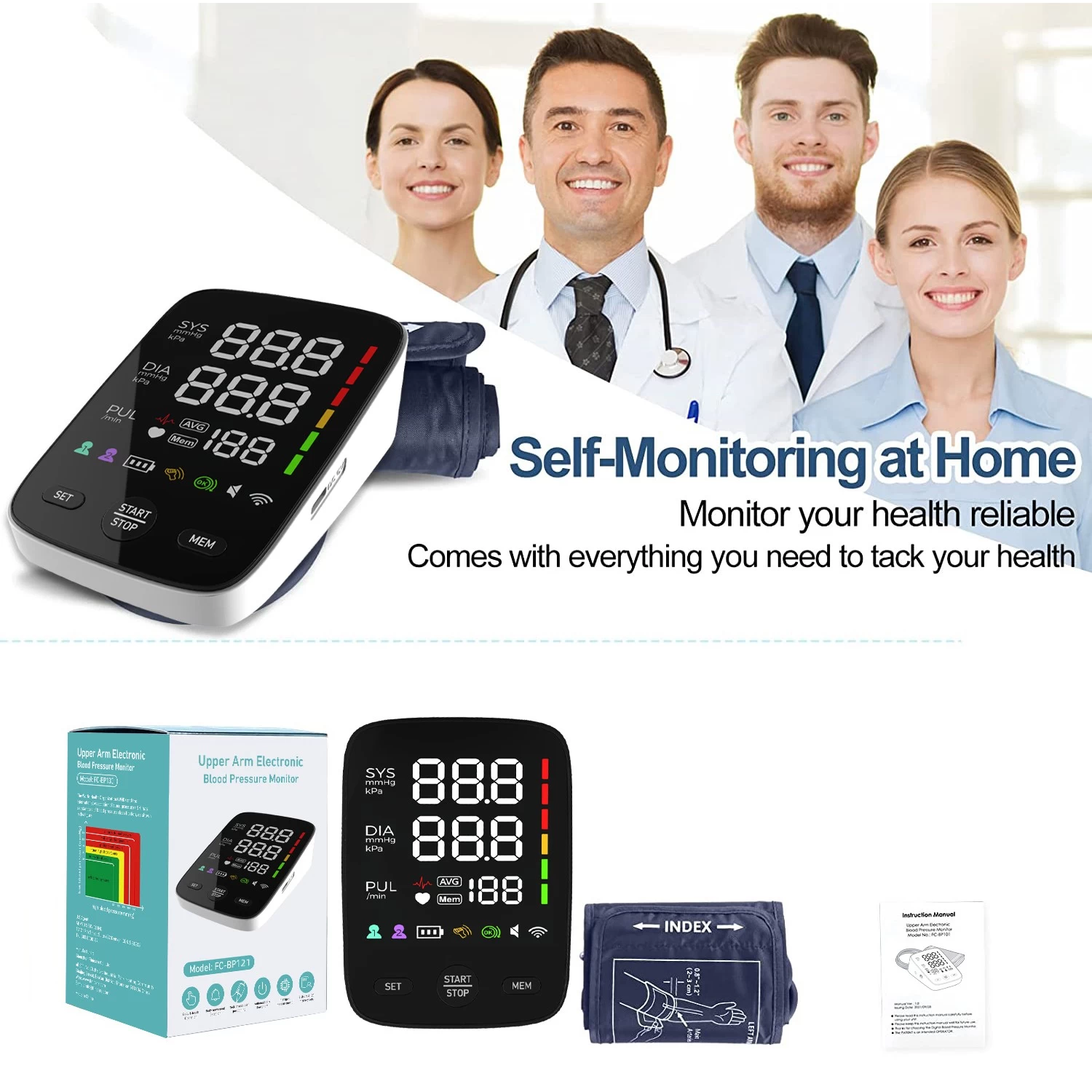
In conclusion, choosing the right BP monitor requires careful consideration of factors such as accuracy, type, ease of use, memory function, additional features, battery life, and price. By taking the time to research and understand these aspects, you can select a BP monitor that meets your specific needs, allowing you to effectively monitor your blood pressure and take control of your health. Regular blood pressure monitoring with a reliable device can be an important step in maintaining a healthy lifestyle and preventing serious cardiovascular diseases.
Just for you
Send Inquiry



